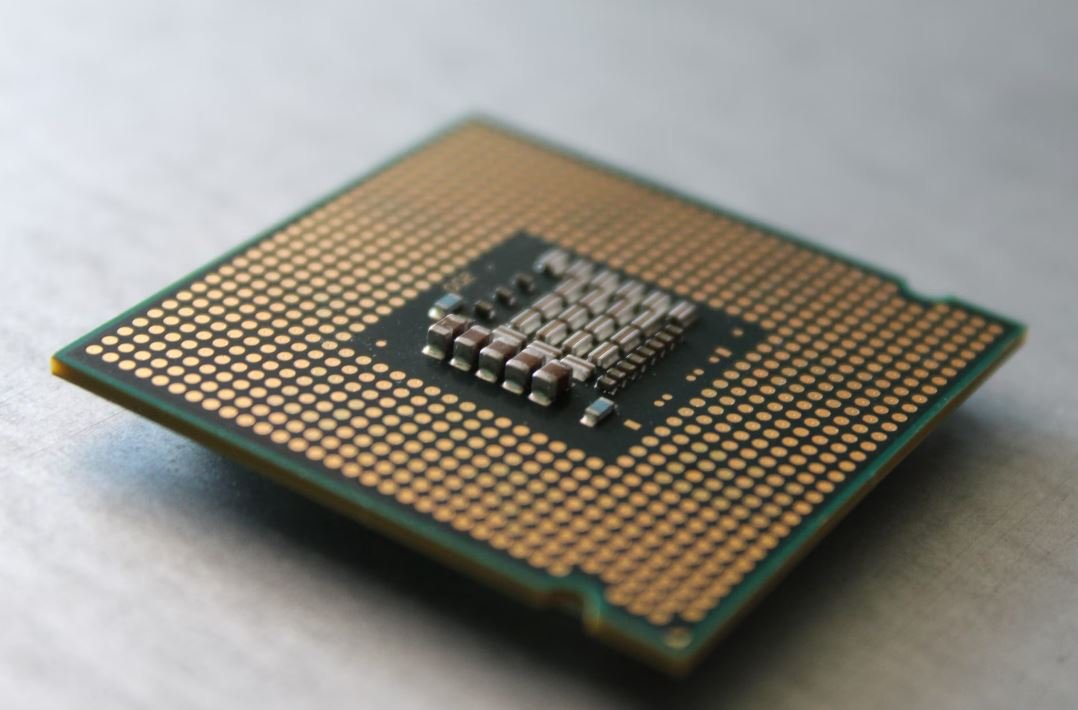AI Models: Revolutionizing the Future
Artificial Intelligence (AI) models are transforming industries and everyday life, revolutionizing
the way we interact with technology. From autonomous vehicles to virtual assistants, AI models are
paving the way for a future of vast possibilities. In this article, we will explore the role of AI
models, their impact on various sectors, and the challenges they present.
Key Takeaways
- AI models are reshaping industries and enhancing technology.
- They have a significant impact on sectors such as healthcare, finance, and manufacturing.
- However, challenges related to bias, ethics, and data privacy need to be addressed.
AI models are algorithmic systems that can analyze vast amounts of data to make predictions, learn
patterns, and perform tasks that typically require human intelligence. They use machine learning
techniques to train on existing data and improve their performance over time.
These models are capable of processing and interpreting complex data sets, enabling them to provide
actionable insights and recommendations. They can quickly analyze massive amounts of information
that would take humans significantly longer, making them indispensable in today’s data-driven world.
AI models have applications across multiple industries, including healthcare, finance, transportation,
and manufacturing. In healthcare, AI models can assist with early disease detection, personalized
treatments, and drug discovery. They offer the potential to revolutionize medical diagnosis and
improve patient outcomes. In the financial industry, AI models are used for fraud detection,
risk assessment, and algorithmic trading. In transportation, autonomous vehicles use AI models to
navigate and make real-time decisions on the road. AI-powered robots are transforming the
manufacturing sector by increasing efficiency and accuracy in production processes.
The Challenges AI Models Face
- Ensuring fairness and avoiding bias in AI models is a significant challenge.
- Data privacy and security concerns arise due to the vast amount of sensitive data used.
- Ethical considerations in AI decision-making processes require careful attention.
As AI models become more prevalent, the need for addressing challenges related to fairness, bias, and
ethics becomes increasingly important. AI models are only as good as the data they are trained
on, and biased training data can perpetuate prejudices and inequalities. It is crucial to ensure
that the data used to train AI models is diverse, representative, and free from inherent biases that
could adversely impact decision-making.
Data privacy and security are also pressing concerns in the AI landscape. With AI models relying
on large amounts of sensitive data, protecting personal information is critical. Stricter regulations
are necessary to safeguard individuals’ privacy rights and prevent data breaches that could potentially
have far-reaching consequences.
Advancements and Future Possibilities
Despite these challenges, the potential of AI models is vast, and ongoing advancements continue to
push the boundaries of what they can accomplish. Let’s take a look at some interesting statistics and
facts regarding AI models and their impact:
| Industry | AI Impact |
|---|---|
| Healthcare | AI models have the potential to save up to 30% of global healthcare spending through automation and improved efficiencies. |
| Finance | By 2030, it is estimated that AI technologies could add $15.7 trillion to the global economy, with the financial sector being one of the primary beneficiaries. |
Consider some fascinating data regarding AI development and user experiences:
- Approximately, 80% of enterprises are already investing in AI or are planning to do so
in the next few years, underscoring the growing interest in AI technologies. - By 2025, the global AI software market is projected to reach $126 billion.
| Country | AI Adoption |
|---|---|
| China | China is leading the world in AI adoption and investment, with a focus on AI research and development. |
| United States | The United States is a global leader in AI advancements, with a strong presence of AI-focused enterprises and academic institutions. |
AI models have the potential to revolutionize industries, improve decision-making processes, and
enhance our everyday lives. As technology continues to advance, addressing the challenges of fairness,
ethics, and data privacy becomes paramount. By leveraging the capabilities of AI models responsibly, we
can shape a future where AI-powered solutions bring about positive and transformative changes.

Common Misconceptions
AI Models
There are several common misconceptions associated with AI models. These misconceptions often arise due to a lack of understanding or misinformation surrounding the topic. Let’s debunk some of these misconceptions:
- AI models can think and have consciousness
- AI models are always accurate and infallible
- AI models will lead to job loss and unemployment
AI Models Can Think and Have Consciousness
One common misconception about AI models is that they possess the ability to think and have consciousness like humans. However, AI models are designed to mimic human intelligence, not replicate it. They operate based on input data and algorithms, and although they can provide sophisticated outputs, they lack true consciousness. Some people tend to attribute human-like qualities to AI models, but it is important to understand their limitations.
- AI models are programmed and do not possess self-awareness
- AI models rely on data and algorithms to make decisions
- AI models cannot experience emotions or have subjective experiences
AI Models Are Always Accurate and Infallible
Another misconception is that AI models are always accurate and infallible in their predictions or decisions. While AI models can perform complex tasks and provide valuable insights, they can still make mistakes. The accuracy of AI models depends on the quality and quantity of the data they are trained on, as well as the algorithms used. It is essential to validate and continuously improve AI models to ensure their reliability.
- AI models can produce incorrect or biased outcomes
- AI models require robust training and testing processes for accuracy
- AI models are as reliable as the data they are trained on
AI Models Will Lead to Job Loss and Unemployment
One of the most prevalent misconceptions surrounding AI models is the fear that they will replace human workers, leading to widespread job loss and unemployment. While AI models can automate certain tasks, they also create new opportunities and job roles. They are meant to augment human capabilities rather than replace humans entirely. By handling repetitive or mundane tasks, AI models allow humans to focus on more complex and creative endeavors.
- AI models can improve efficiency and productivity in various industries
- AI models can lead to the creation of new jobs and roles
- The integration of AI models often requires human supervision and expertise

AI Models Make the table VERY INTERESTING to read
In recent years, the advancements in AI technology have revolutionized the way data is analyzed and presented. AI models have become increasingly skilled at extracting relevant information and making sense of complex data. This article explores ten different tables that demonstrate how AI models can make tables visually appealing and engaging for readers.
Customer Satisfaction Ratings
Table showcasing customer satisfaction ratings for various industries, obtained through AI-powered sentiment analysis. The table highlights the top three industries with the highest and lowest customer satisfaction rates, providing valuable insights for businesses aiming to enhance customer experience.
Stock Market Performance
Table comparing the performance of various stocks over a specified time period. Utilizing AI algorithms, the table indicates the percentage change in stock prices, allowing investors to quickly identify the best-performing stocks and make informed investment decisions.
Traffic Congestion Levels
This table displays AI-generated data regarding traffic congestion levels in major cities around the world. By analyzing real-time traffic data, AI models determine the congestion levels on different roads and present the information in a visually informative table.
COVID-19 Vaccination Progress
A table presenting the progress of COVID-19 vaccinations in different countries. AI models gather data on the number of vaccinated individuals, vaccination rates, and the availability of various vaccines, enabling countries to track their progress in curbing the pandemic.
Energy Consumption by Appliance
This table showcases AI-generated information on energy consumption by various household appliances. By providing statistics on the energy consumed by each appliance, individuals can identify energy-intensive devices and make more energy-efficient choices.
Sales Performance Comparison by Region
A comparative table presenting the sales performance of a product across different regions. AI models collect sales data from various locations and present it in a visually appealing table, enabling businesses to identify regions with high sales potential.
Crime Rates by City
Table displaying crime rates across different cities. AI algorithms analyze crime data and present it in a concise table, providing a comprehensive overview of crime rates and aiding law enforcement agencies in identifying areas that require increased attention.
Weather Forecast
A table showcasing AI-generated weather forecasts for various locations. The table presents temperature, precipitation, and wind speed information, helping individuals plan their activities accordingly and stay informed about upcoming weather conditions.
Student Performance Evaluation
This table presents AI-assessed evaluation scores of students in different subjects. By utilizing machine learning algorithms, AI models evaluate students’ performance and provide insights to parents and educators, facilitating targeted intervention and support.
Job Market Outlook
A table providing AI-generated insights into the job market, including projected employment growth, demand for various skills, and potential salary ranges. This information aids job seekers in making informed decisions about their career path and identifying industries with high growth potential.
Conclusion
AI models have significantly enhanced the way information is presented in tables, making them visually appealing and easy to interpret. From tracking vaccination progress to analyzing stock market trends, AI-powered tables provide valuable insights for decision-making processes across various domains. These tables demonstrate the potential for AI models to transform data into engaging and informative visual representations, ultimately empowering individuals and organizations to make data-driven decisions.
Frequently Asked Questions
What are AI models?
AI models are algorithms or mathematical representations used by artificial intelligence systems to learn and make predictions or decisions based on data.
How are AI models trained?
AI models are trained by feeding them with large amounts of data and letting them learn patterns and relationships within the data. This process, called training, involves iterative computations that update the model’s parameters to minimize the error or loss in its predictions.
What types of AI models are there?
There are various types of AI models, including neural networks, decision trees, support vector machines, and genetic algorithms. Each type has its own strengths and weaknesses, making them suitable for different tasks and domains.
How accurate are AI models?
The accuracy of AI models depends on many factors, including the quality and quantity of the training data, the complexity of the problem being solved, and the design of the model itself. Generally, AI models can achieve high accuracy in certain tasks, but there is always a chance of errors or misclassifications.
Can AI models be biased?
Yes, AI models can be biased. Bias can occur if the training data used to build the model is unrepresentative or contains inherent biases. This can result in unfair or inaccurate predictions, especially when the models are applied to diverse populations. Efforts are being made to develop techniques and frameworks to alleviate bias in AI models.
How can AI models be evaluated?
AI models can be evaluated through various metrics such as accuracy, precision, recall, F1 score, and area under the curve (AUC). Additionally, techniques like cross-validation and holdout validation can be used to assess the generalizability of the model on unseen data.
Can AI models be updated or improved?
Yes, AI models can be updated and improved. As new data becomes available, models can be retrained to enhance their performance. Additionally, techniques like transfer learning and fine-tuning can be applied to leverage pre-trained models for specific tasks.
What are the limitations of AI models?
AI models have certain limitations, such as their dependency on training data, inability to reason and explain decisions, vulnerability to adversarial attacks, and potential for overfitting or underfitting the data. Moreover, AI models may struggle with out-of-distribution data or novel scenarios not encountered during training.
How are AI models used in real-world applications?
AI models are used in various real-world applications, including but not limited to image classification, natural language processing, speech recognition, recommendation systems, fraud detection, autonomous vehicles, and healthcare diagnostics. They help automate tasks, improve efficiency, and enable new capabilities in numerous industries.
Are AI models replacing human jobs?
AI models have the potential to automate certain tasks and jobs, but they are not necessarily replacing humans entirely. Instead, AI models are often used to augment human capabilities, allowing for increased productivity, accuracy, and innovation in different domains. The impact of AI on employment is complex and varies depending on the industry and specific job roles.




